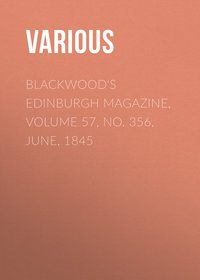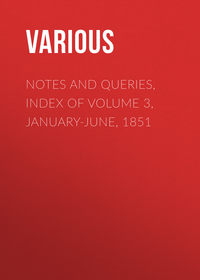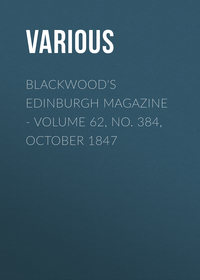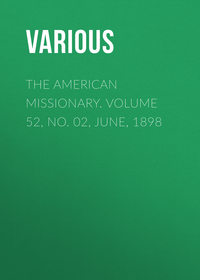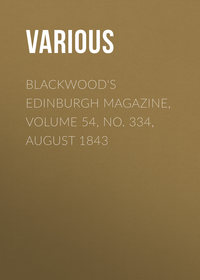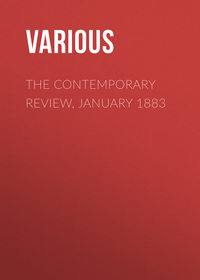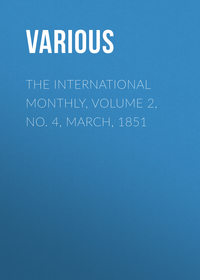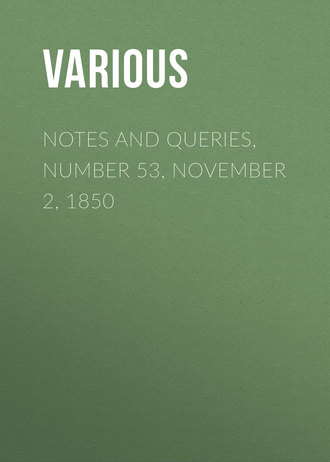 полная версия
полная версияNotes and Queries, Number 53, November 2, 1850
"This book is printed in a Gothic letter, with woodcuts and Initial Letters (in the year 1518).
"I have carefully examined every book printed at Antwerp, at the period, that has fallen in my way; but in no one of them have I found the same type or initial letters as are used therein.
"In the present tract I find the same form of type and woodcuts, from the same school; and also, what is more remarkable, an initial (D) letter, one of the same alphabet as a P used in the Testament. These initial letters were always cut in alphabets, and in no other books than these two have I discovered any of the letters of this alphabet.
"The mistake has arisen from the circumstance of there having been a piratical reprint of the book at Antwerp in 1525, but of which no copy is known to exist."
The following is the title of the tract referred to by Mr. Rodd:—
"Eyn wolgeordent und nützlich buchlin, wie man Bergwerck suchen un finden sol, von allerley Metall, mit seinen figuren, nach gelegenheyt dess gebirgs artlich angezeygt mit enhangendon Berchnamen den anfahanden" and the colophon describes it as "Getruckt zu Wormbs bei Peter Schörfern un volendet am funfften tag Aprill, M.D.XVIII."
The Term "Organ-blower."—In an old document preserved among the archives of the Dean and Chapter of Westminster, is an entry relative to the celebrated composer and organist HENRY PURCELL, in which he is styled "our organ-blower." What is the meaning of this term? It certainly does not, in the present case, apply to the person whose office it was to fill the organ with wind. Purcell, at the time the entry was made, was in the zenith of his fame, and "organist to the king." Possibly it may be the old term for an organist, as it will be remembered that in the fifteenth century the organ was performed upon by blows from the fist.
At the coronation of James II., and also at that of George I., two of the king's musicians walked in the procession, clad in scarlet mantles, playing each on a sackbut, and another, drest in a similar manner, playing on a double curtal, or bassoon. The "organ-blower" had also a place in these two processions, having on him a short red coat, with a badge on his left breast, viz. a nightingale of silver, gilt, sitting on a sprig.
In a weekly paper, entitled the Westminster Journal, Dec. 4. 1742, is a letter subscribed "Ralph Courtevil, Organ-blower, Essayist, and Historiographer." This person was the organist of St. James's Church, Piccadilly, and the author of the Gazetteer, a paper written in defence of Sir Robert Walpole's administration. By the writers on the opposite side he was stigmatized with the name of "Court-evil."
At the present time, as I am given to understand, the organist of St. Andrew's Church, Holborn, is styled in the vestry-books, the "organ-blower."
EDWARD F. RIMBAULT."Singular" and "Unique."—The word singular, originally applied to that of which there is no other, gradually came to mean extraordinary only, and "rather singular," "very singular indeed," and such like phrases, ceased to shock the ear. To supply the vacancy occasioned by this corruption, the word unique was introduced; which, I am horror-struck to see, is beginning to follow its predecessor. The Vauxhall bills lately declared Vauxhall to be the "most unique place of amusement in the world." Can anything be done to check this ill-fated word in its career? and, if not, what must we look to for a successor?
M.QUERIES
EARLY POETRY, ETC., FIVE BIBLIOGRAPHICAL QUERIES RESPECTING
1. Who was the author of—
"A Poeme on the King's most excellent maiesties happy progress into Scotland and much desired returne. May, 1685. Imprinted at London, MDCXXXIII."
It consists of ten leaves, exclusive of title-page, and is signed with the initials J.R. No copy has been traced in any public or private library.
2. How many leaves does Nich. Breton's Fantastiques contain? I have a copy, apparently of a more recent date than the one alluded to in "NOTES AND QUERIES" (Vol. i., p. 410.), wanting the title, and probably introductory leaf; the text, however, is quite complete. Where can a perfect copy be found?
3. There is in my possession a poetical collection, of which I can find no trace in any library public or private. It is dedicated to "Edmond Lord Sheffield, Lord President of his Maiesties Council established in the north parts," and the following is a copy of the title-page:—
"Northerne Poems congratulating the King's Maiesties most happy and peaceable entrance to the crowne of England.
'Sorrowe was ouer nightBut joy came in the morning.''Serò, quamvis seriò,Sat cito, si sat benè.''These come too late, though they import they love,Nay, soone enough, if good enough they prove.'Printed at London by John Windet for Edmund Weaver, and are to be solde at the Great North doore of Paules, 1604. Small 4to."
Four leaves not numbered, and twenty-two pages numbered.
4. Can any account be given of a sort of autobiography by an individual whom Lord Orford sneers at in his Anecdotes of Painting; it is entitled:
"A Manifestation by Sir Balthazar Gerbier, K't. Job. xiii., ver. 18.; 'Behold now, I have ordered my cause, I know that I shall bee justified.' London, Printed for the author, 1651." 12mo. 36 leaves and title.
This very singular production does not appear to have been published, and I cannot trace it in any catalogue. It gives the author's descent, which is noble, and contains many interesting personal details of Sir Balthazar, which cannot be found elsewhere.
5. In the Bibliographer's Manual, by Lowndes, there occurs this entry: "Life and death of Major Clancie, the grandest cheat in this age," 1680, and the full catalogue of the Hon. Mr. Nassau is referred to. Can any of your readers state where a copy of this production may be found? A brief account of Clancie is contained in the Memoirs of Gamesters and Sharpers, by Theophilus Lucas. He wrote, or there was written, under this name, various other works not noticed by Lowndes. Can any information be given as to the assumed or real author of these works?
Lowndes also mentions Clancie's Cheats, or the Life and Death of Major Clancie, 1687. Where can access to this work be obtained?
J. MT.Edinburgh.
MINOR QUERIES
History of Newspapers.—
"The materials for a satisfactory history of newspapers, lie scattered in facts known one to this person, and one to that. If each London or provincial journalist, each reader, and each critic, who has an anecdote and a date, would give it publicity, some future volume might be prepared from the combined supply, much more complete than any to be fairly expected from a comparatively unaided writer who ventures upon an almost untrodden ground."
The foregoing extract from the interesting volumes recently published by Mr. Knight Hunt, under the unpretending title of The Fourth Estate: Contributions towards a History of Newspapers, and of the Liberty of the Press, has been very kindly recommended to our attention by The Examiner. We gladly avail ourselves of the suggestion, and shall be pleased to record in our columns any facts of the nature referred to by Mr. Hunt.
Steele's Burial-place.—Sir Richard Steele died in the house now the "Ivy Bush" Inn, at Carmarthen, on the 1st of September, 1729.
Where was he buried?
Is there a monument or inscription to his memory in any church in or near Carmarthen?
LLEWELLYN.Socinian Boast.—In an allocution recently held by Dr. Pusey, to the London Church Union, in St. Martin's Hall, reported in The Times of Oct. 17, the following passage occurs:
"The Socinian boast might be a warning to us against such declarations. The Socinian pictured Calvin as carrying on the protest against Rome more vigorously than Luther, himself than Calvin:
"Tota jacet Babylon; destruxit tecta Lutherus,Calvinus muros, sed fundamenta Socinus."Query, By what Socinian writer are these two hexameter verses used?
L.Descent of Edward IV.—Professor Millar, in his Historical View of the English Government (ii. 174.), in discussing the claim of Edward IV. to the English throne, speaks of "a popular though probably a groundless tradition, that by his mother he was descended from Henry III. by an elder brother of Edward I., who, on account of his personal deformity, had been excluded from the succession to the crown." Where may I find this tradition? or where meet with any information on the subject?
S.A.Y.Viscount Castlecomer.—Sir Christopher Wanderforde, who succeeded poor Strafford as Lord Deputy of Ireland, in April, 1640, was created, between that date and his death, which occurred in December of the same year, Baron Mowbray and Musters, and Viscount Castlecomer. I should be glad to know the date of the patent of his creation, whether Sir Christopher himself ever took up the title, and what became of the title afterwards?
S.A.Y.Judge Cradock, afterwards Newton.—MR ELLACOMBE (Vol. ii., p. 249.), in his notice of a monument in Yatton Church to "Judge Newton, alias Cradock," says, "the arms of Cradock are Arg. on chevron az. three garbs or." Richard Cradock, he adds, "was the first of his family who took the name of Newton." Does MR. ELLACOMBE mean that the above arms were those of the Cradock family, or that this Richard Cradock assumed the coat as well as the name of Newton? The above was the bearing of the family of Newton, of East Newton, in the North Riding of York. The eldest daughter and coheir of John Newton of East Newton was married to William Thornton, which family thus became possessed of the estate of East Newton, and quartered the coat assigned by MR. ELLACOMBE to Cradock. I should be glad to know the occasion on which Richard Cradock assumed the name and arms of Newton, as well as the connexion between these Newtons and those settled at East Newton.
S.A.Y.Totness Church.—In Totness Church, the N. angle of the chancel is cut off in the lower part of the building, in order to allow an arched passage from one side of the church to the other outside.
The upper part of the building is supported by a very strong buttress or pier, leaving the diagonal passage between it and the internal wall. Can any one tell whether this was done merely to afford a gangway for want of room outside?
The graveyard has been recently enlarged in that direction, for all the tombstones beyond the line of the chancel appear to be of late date. An old woman informed me, with an air of solemn authenticity, that this arched passage was reserved as a place of deposit for the bodies of persons seized for debt, which lay there till they were redeemed.
H.G.T.Meaning of "Harissers."—It is customary in the county of Dorset, after carrying a field of corn, to leave behind a sheaf, to intimate to the rest of the parish that the families of those who reaped the field are to have the first lease. After these gleaners have finished, the sheaf is removed, and other parties are admitted, called "barissers." I have been told that the real title is "arishers," from "arista." I should feel obliged if any of your correspondents could inform me whether this name is known in any other county, and what is the derivation of the word.
CLERICUS RUSTICUS.Ringelbergius—Drinking to Excess.—Ringelbergius, in the notes to his treatise De Ratione Studii, speaking of great drinkers, has this passage:
"Eos qui magnos crateras haustu uno siccare possunt, qui sic crassum illud et porosum corpus vino implent, ut per cutem humor erumpat (nam tum se satis inquiunt potasse, cùm, positis quinque super mensam digitis, quod ipse aliquando vidi, totidem guttæ excidunt) laudant; hos viros esse et homines dicunt."
He says that he himself has seen this. Does any reader of the "NOTES AND QUERIES" know of any other author who says that he has seen such an exhibition? Or can Ringelbergius's assertion be confirmed from any source?
J.S.W.Stockwell, Oct. 15.
Langue Pandras.—In the Life of Chaucer prefixed to the Aldine edition of his poetical works, there is published, for the first time, "a very interesting ballad," "addressed to him by Eustache Deschamps, a contemporary French poet," of which I beg leave to quote the first stanza, in order to give me the opportunity of inquiring the meaning of "la langue Pandras," in the ninth line:
"O Socrates, pleins de philosophie,Seneque en moeurs et angles en pratique,Ovides grans en ta poeterie,Bries en parier, saiges en rethorique,Aigles tres haulte qui par ta theoriqueEnlumines le regne d'EneasL'isle aux geans, ceulx de Bruth, et qui asSemé les fleurs et planté le rosierAux ignorans de la langue Pandras;Grant translateur, noble Geoffroy Chaucier."May I ask, further, whether any particulars are known of this contemporary and admirer of Chaucer?
I hope I shall not be deemed presumptuous if I add that I should have doubted of the genuineness of the poem quoted from, if Sir Harris Nicolas had not stated that it had been communicated to him by "Thomas Wright, Esq., who received it from M. Paulin Paris," gentlemen in every way qualified to decide on this point, and being sanctioned by them, I have no wish to appeal from their judgment.
J.M.B.The Coptic Language.—I read in The Times of this morning the following:
"The Coptic is an uncultivated and formal tongue, with monosyllabic roots and rude inflexions, totally different from the neighbouring languages of Syria and Arabia, totally opposite to the copious and polished Sanscrit."
Do you think it worth while to try if some Coptic scholar among your learned correspondents can give us some clearer account of the real position of that tongue, historically so interesting? The point is this, Is it inflected, or, does it employ affixes, or is it absolutely without inflections and affixes?
If the first, it cannot be "totally opposite" to the Sanscrit: if the second, it cannot be "totally different" from Syriac and Arabic: if the third, it cannot have "rude inflections."
J.E.Oxford, October 23. 1850.
Cheshire Cat.—Will some of your correspondents explain the origin of the phrase, "grinning like a Cheshire cat?" The ingenious theory of somebody, I forget who, that Cheshire is a county palatine, and that the cats, when they think of it, are so tickled that they can't help grinning, is not quite satisfactory to
K.I.P.B.T.Mrs. Partington.—Where may I find the original Mrs. Partington, whose maltreatment of the Queen's English maketh the newspapers so witty and merry in these dull days?
IGNORANS.Cognation of the Jews and Lacedemonians.—In the 12th chapter of the 1st Book of Maccabees the letter of Jonathan, the High Priest, to the Lacedemonians is given, in which he claims their amity. This is followed by a letter of Arcus, the Spartan king, in answer, and which contains this assertion:
"It is found in writing that the Lacedemonians and Jews are brethren, and that they are of the stock of Abraham."
Have critics or ethnographers commented on this passage, which, to say the least, is remarkable?
As I am quoting from the Apocrypha, I may point out the anomaly of these books being omitted in the great majority of our Bibles, whilst their instructive lessons are appointed to be read by the Church. Hundreds of persons who maintain the good custom of reading the proper lessons for the day, are by this omission deprived, during the present season, of two chapters out of the four appointed.
MANLEIUS.REPLIES
FAIRFAX'S TRANSLATION OF TASSO
On referring to my memoranda, I find that the copy of Fairfax's translation of the Gerusalemme Liberata of Tasso, containing the third variation of the first stanza, noticed in my last, has the two earliest pages reprinted, in order that the alteration might be more complete, and that the substitution, by pasting one stanza over another (as the book is usually met with) might not be detected. A copy with the reprinted leaf is, I apprehend, still in the library of the late William Wordsworth; and during the last twenty years I have never been able to procure, or even to see, another with the same peculiarity.
The course with the translator was, no doubt, this: he first printed his book as the stanza appears under the pasted slip; this version he saw reason to dislike, and then he had the slip printed with the variation, and pasted over some copies not yet issued. Again he was dissatisfied, and thinking he could improve, not only upon the first stanza, but upon "The Argument" by which it was preceded, he procured the two pages to be reprinted. It is, however, by no means clear to me that, after all, Fairfax liked his third experiment better than his two others: had he liked it better, we should, most probably, have found it in more copies than the single one I have pointed out.
As your readers and contributors may wish to see "The Argument" and first stanza as they are given in Mr. Wordsworth's exemplar, I transcribe them from my note-book, because, before I gave the book away, I took care to copy them exactly:—
THE ARGUMENT"God sends his angell to Tortosa downe:Godfrey to counsell cals the Christian Peeres,Where all the Lords and Princes of renowneChuse him their general: he straight appeeresMustring his royall hoast, and in that stowneSends them to Sion, and their hearts upcheeres.The aged tyrant, Judaies land that guides,In feare and trouble to resist provides."I sing the sacred armies and the knightThat Christ's great tombe enfranchis'd and set free.Much wrought he by his witte, much by his might,Much in that glorious conquest suffred hee:Hell hindered him in vaine: in vaine to fightAsia's and Affrick's people armed bee;Heav'n favour'd him: his lords and knights misgoneUnder his ensigne he reduc'd in one."I own that, to my ear and judgment, this is no improvement upon what we may consider the author's second attempt, although I think that the slip pasted over some (if not most) copies is better than the first experiment.
THE HERMIT OF HOLYPORT.SMALL WORDS
I stand convicted by the critical acumen of your correspondent [Greek: Ph]. of having misquoted the line from Pope which heads my "note" at p. 305. I entirely agree with [Greek: Ph]. that the utmost exactness is desirable in such matters; and as, under such circumstances, I fear I should be ready enough to accuse others of "just enough of learning to misquote," I have not a word to say in extenuation of my own carelessness.
But I entirely dispute [Greek: Ph].'s inference, and am unable to see that the difference detracts in any substantial degree from the applicability of my remarks, such as they were.
What does Pope's epithet "low" mean? Is it used for "vulgar" (as I presume [Greek: ph]. intends us to infer), or simply for "small, petty, of little size or value"?
To me it appears impossible to read the line without seeing that Pope had in his mind the latter idea, that of poor, little, shabby, statureless monosyllables, as opposed to big, bouncing, brave, sonorous polysyllables, such as Aristophanes called [Greek: hræmata hippokræmna]. After all, however, it would do me very little damage to concede that he intended the meaning which [Greek: ph]. appears to attribute to the epithet "low", for if he did mean "vulgar" words, it is evident that he considered vulgarity in such matters inseparable from littleness, as the "low" words must, if his line is not to lose its point altogether, have been ten in number, that is, every one a monosyllable, a "small" word.
Take it which way you will, the leading idea is that of "littleness;" moreover, there is no propriety in the word "creep" as applied to merely vulgar words, while words petty in size may, with great justice, be said to "creep" in a "petty pace," requiring no less than ten steps to walk the length of a line.
Pope was criticising compositions intended to pass as poetry of the best kind. Will [Greek: ph]. point out in any existing poem of such profession and character, a single heroic line, consisting of ten words, all which ten words shall be "low" in the sense of "vulgar"? Can even the Muses of burlesque and slang furnish such an instance?
Has not [Greek: ph]. suffered himself to be carried too far by his exultation in being "down" (the last-named Muse has kindly supplied me with the expression) upon a piece of verbal carelessness on the part of
K.I.P.B.T.?REPLIES TO MINOR QUERIES
Concolinel (Vol. ii., pp. 217. 317.).—As Calen O Custore me, after sorely puzzling the critics, was at length discovered to be an Irish air, or the burthen of an Irish song, is it not possible that the equally outlandish-looking "Concolinel" may be only a corruption of "Coolin", that "far-famed melody," as Mr. Bunting terms it in his last collection of The Ancient Music of Ireland (Dublin, 1840), where it may be found in a style "more Irish than that of the sets hitherto published?" And truly it is a "sweet air," well fitted to "make passionate the sense of hearing," and melt the soul of even Don Adriano de Armado. The transmogrification of "Coolin" into "Concolinel", is hardly more strange than that of "Cailin og astore mo" [chree] (=my dear young girl, my [heart's] darling) into Callino castore me.
J.M.B.DR. RIMBAULT'S communication is very interesting, but not quite satisfactory, not affording me any means of identifying the air. It would under most circumstances, have given me much pleasure to have lent DR. R. the MS., for I know no one so likely to make good use of it; but the fact is, that without pretending to compete with DR. RIMBAULT in the knowledge of old music, I have also meditated a similar work on the ballads and music of Shakspeare, and my chief source is the volume which is said to contain the air of Concolinel. It will be some time before I can execute the work alluded to, and I would prefer to see the Doctor's work published first. Whichever first appears will most likely anticipate much that is in the other, for, although Dr. R. says he has spent "many years" on the subject, the accidental possession of several MS. volumes has given me such singular advantages, I am unwilling to surrender my project. I have the music to nearly twenty jigs, and two have some of the words, which are curious.
R.Wife of the Poet Bilderdijk—Schweickhardt the Artist (Vol. ii., pp. 309. 349.).—JANUS DOUSA will find a very sufficient account of Southey's visit to the Dutch poet Bilderdijk, in vol. v. of the Life and Correspondence of Southey, now publishing by his son. To the special inquiry of JANUS DOUSA I can say nothing, but I would fain ask who was Katherine Wilhelmina Schweickhardt? I have in my possession a series of eight etchings of studies of cattle, by H.W. Schweickhardt, published in 1786, and dedicated to Benjamin West. My father was very intimate with Schweickhardt, and I think acted in some sort as his executor. I do not know when be died but it must be thirty years since I heard my father speak of his friend, who was then deceased, but whether recently or not I cannot say. I am rather disposed to think the event was comparatively a remote one: he left a widow. Was Mrs. Bilderdijk his daughter? The etchings are exceedingly clever and artistical; my copy has the artist's name in his own handwriting. If I am not mistaken, Schweickhardt lived, when my father knew him, at Lambeth, then a picturesque suburb very unlike the "base, common, and popular" region which it has since become. B.T. Pouncy, another clever artist of that day, and a friend of my father's, resided there also. Pouncy published some etchings which, although not professedly views of Lambeth, were in reality studies in that locality. When I was a boy I remember my father pointing out to me the Windmill, which was the subject of one of them.




